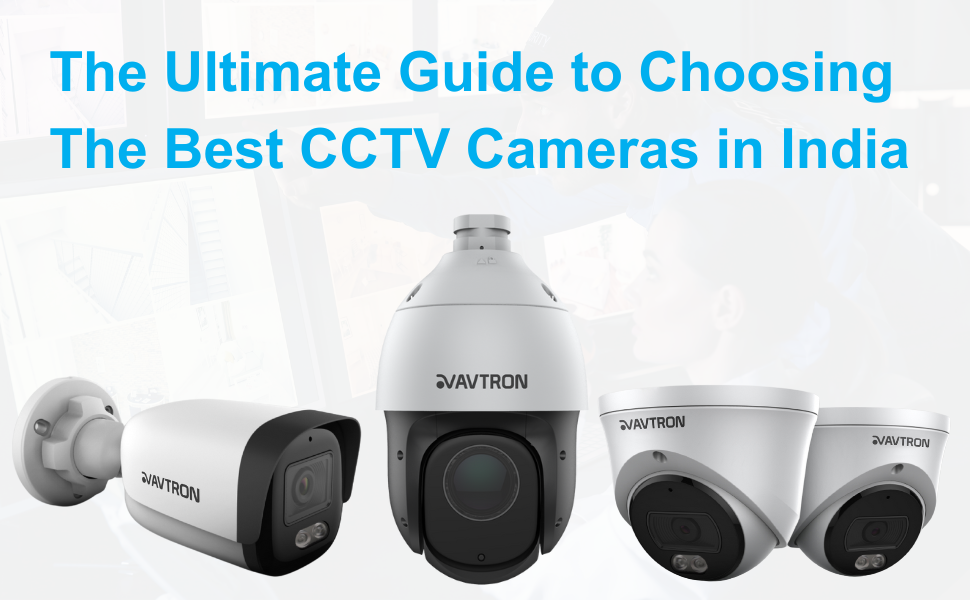
The evolution from traditional CCTV systems to AI-powered CCTV cameras has dramatically transformed the world of surveillance. Historically, conventional CCTV setups were used mainly for recording video footage, often reviewed only after an incident occurred. Due to the reliance on manual monitoring and limitations in real-time observation, many critical events went unnoticed. This left gaps in security coverage, especially in large-scale or high-traffic environments.
Now, AI-based surveillance systems have emerged as game-changers. These advanced systems not only record video but also analyze it in real-time using intelligent algorithms. By identifying unusual patterns, alerting operators instantly, and reducing the need for human oversight, AI surveillance cameras enhance security effectiveness across industries.
In this article, we’ll explore how this powerful transition impacts surveillance and how Avtron’s smart CCTV solutions can secure your future.
Understanding Traditional CCTV Systems
Conventional CCTV cameras have been around since the late 1940s. These systems typically include analog cameras, DVRs (Digital Video Recorders), and monitors for viewing. While these setups once represented cutting-edge technology for their time, their limitations have become increasingly evident in today’s fast-paced world.
Key issues with traditional CCTV systems include:
-
Lack of smart features such as motion detection or facial recognition
-
Complete dependence on human monitoring, increasing the risk of missed incidents
-
Cumbersome video retrieval, especially during emergencies
-
Vulnerability to tampering, hardware failure, or environmental conditions
Despite their early success, these challenges have pushed the industry to seek more efficient and intelligent alternatives.
Timeline of CCTV Evolution
| Year | Development |
|---|---|
| 1942 | First CCTV used by Siemens in Germany to monitor rocket launches |
| 1949 | CCTV use spreads to banks in the U.S. |
| 1960s | Used for public safety and urban monitoring |
| 1970s | VCRs introduced, allowing video recording and playback |
| 1980s | Expansion into retail and private security sectors |
| 1990s | Digital tech & DVRs introduced for better quality and storage |
| 2000s | Adoption of IP Cameras improved image resolution |
| 2020s | Rise of AI-powered CCTV systems with real-time analytics and predictive monitoring |
The Rise of AI-Powered CCTV Cameras
The arrival of AI-powered security cameras has revolutionized how we protect homes, offices, and public spaces. These systems leverage technologies like machine learning, computer vision, and data analytics to deliver proactive, real-time security solutions.
AI cameras do more than just record — they interpret and understand video feeds, learning from activity patterns and automatically flagging anomalies. Over time, these systems become smarter, enabling predictive surveillance and reducing false alarms.
Benefits of AI-Powered CCTV Surveillance
AI-based security cameras offer several crucial advantages over traditional systems. Let’s explore the key benefits:
Enhanced Security and Real-Time Threat Detection
-
Real-time monitoring with instant alerts for suspicious behavior
-
Integration of facial recognition and behavioral analytics
-
Reduced risk of human error and quicker response times
Improved Operational Efficiency
-
Elimination of manual video monitoring, allowing security teams to focus on strategic tasks
-
Faster incident detection and reporting
-
Suitable for high-footfall areas like malls, airports, and public transport hubs
Smart Data Management
-
AI-assisted video indexing makes retrieving specific footage simple
-
Integration with access control systems and emergency alarms
-
Optimized cloud-based storage for efficient data management
Scalability and Remote Access
-
Easily scalable according to your needs
-
Cloud-based surveillance systems allow remote access from any location
-
Ideal for multi-site operations and growing businesses
Whether you’re deploying a wireless WiFi camera, a security camera with SIM card, or a multi-unit office solution, AI-powered technology delivers a higher standard of surveillance.
The Future of Surveillance: Powered by Avtron
As security concerns become more complex, the need for intelligent CCTV systems becomes unavoidable. At Avtron, we are committed to empowering businesses, homes, and institutions with cutting-edge AI surveillance solutions.
Our next-gen cameras come equipped with features like:
-
Real-time threat alerts
-
Motion and facial recognition
-
Smart analytics dashboards
This ensures maximum protection, faster decision-making, and lower operational costs.


Takeaway: Why Make the Shift Today?
Transitioning from traditional to AI-powered CCTV systems is not just a technological upgrade — it’s a strategic investment in long-term safety. The benefits of intelligent surveillance include enhanced protection, improved efficiency, and more informed security operations.
Avtron is at the forefront of this innovation, offering AI-based solutions tailored to your unique requirements. Whether you’re a homeowner or a business owner, our surveillance systems are designed to help you stay one step ahead.
About Avtron
Avtron is a leading provider of smart surveillance solutions in India, known for delivering high-performance CCTV cameras backed by the latest technology. Our goal is not just to protect — but to empower. With built-in 200+ AI features like motion detection, live alerts, and advanced analytics, Avtron’s systems are built for the future.
When you choose Avtron, you partner with a team that understands your security challenges and is committed to delivering customised, reliable, and scalable CCTV solutions.
👉 Ready to upgrade to AI-powered surveillance? Contact Avtron today and take the first step toward a safer, smarter environment.




 In today’s fast-paced world, security threats are more prevalent than ever. From petty thefts to serious criminal activity, safeguarding homes and businesses has become a priority.
In today’s fast-paced world, security threats are more prevalent than ever. From petty thefts to serious criminal activity, safeguarding homes and businesses has become a priority. 
